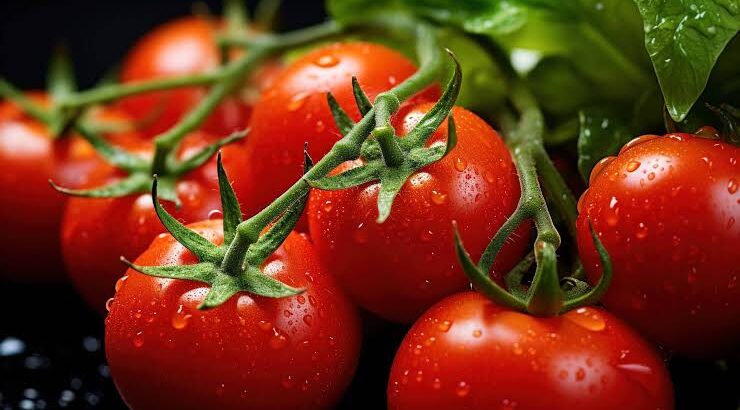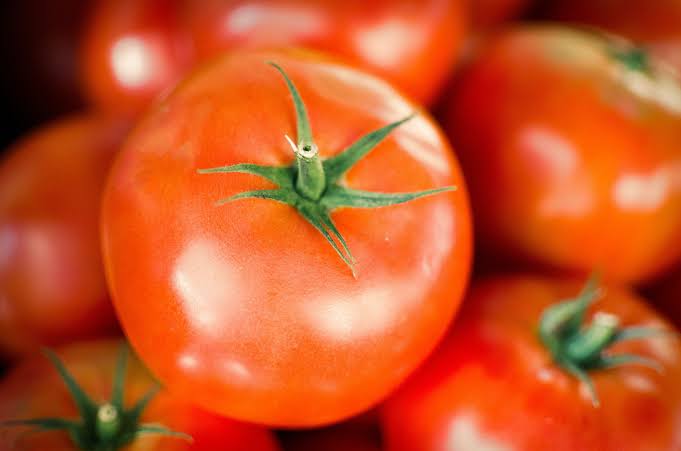How to Start and Succeed in Tomato Farming in Nigeria

Tomato farming in Nigeria presents a lucrative opportunity for both novice and experienced farmers, given the crop’s integral role in Nigerian cuisine and the increasing demand for fresh produce. This comprehensive guide aims to provide a detailed, step-by-step approach to starting and succeeding in tomato farming in Nigeria, covering essential aspects such as site selection, climate considerations, soil preparation, seed selection, nursery management, transplanting, irrigation, fertilization, pest and disease control, harvesting, and marketing strategies.
1. Understanding the Tomato Plant
Tomatoes (Solanum lycopersicum) are versatile and can be cultivated in various climates, but they thrive best in warm environments. In Nigeria, the tropical climate is conducive to tomato farming, with optimal growth occurring at temperatures between 20°C and 28°C. However, extreme temperatures above 35°C can lead to flower abortion and hinder fruit development. Therefore, selecting the appropriate planting season and employing suitable farming practices are crucial for a successful harvest.
2. Selecting the Right Tomato Variety
Choosing the appropriate tomato variety is pivotal to achieving high yields and meeting market demands. Tomato varieties are broadly categorized into determinate and indeterminate types:
- Determinate Varieties: These are bush-type tomatoes that grow to a certain height, produce a flush of fruits, and then cease growing. They are ideal for mechanized farming and are commonly used for processing purposes. Examples include Roma VF and UC82B.
- Indeterminate Varieties: These are vining types that continue to grow and produce fruits throughout the growing season. They require staking and are suitable for fresh markets. Examples include Big Boy and Beefsteak.
When selecting a variety, consider factors such as disease resistance, yield potential, fruit size, and market preferences. Consulting with local agricultural extension services can provide insights into the best-performing varieties in your region.
READ MORE: Empowering Nigerian Farmers: Government Support and Loan Opportunities
3. Site Selection and Land Preparation
Selecting an appropriate site is fundamental to the success of your tomato farm. The ideal site should have the following characteristics:
- Soil Type: Tomatoes thrive in well-drained sandy loam soils rich in organic matter. The soil pH should be between 5.5 and 6.5. Conduct a soil test to determine nutrient levels and pH, and amend the soil accordingly.
- Topography: A gentle slope is preferable to facilitate drainage and prevent waterlogging, which can lead to root diseases.
- Accessibility: Ensure the farm is accessible for the transportation of inputs and harvested produce.
Land Preparation Steps:
- Clearing: Remove all vegetation, debris, and stones from the site.
- Tilling: Plow the land to a depth of about 15-20 cm to loosen the soil and improve aeration.
- Harrowing: Break down large soil clods to create a fine tilth suitable for planting.
- Bed Formation: Create raised beds or ridges to enhance drainage and root development.
4. Nursery Establishment and Management
Raising seedlings in a nursery before transplanting is a common practice in tomato farming. This approach allows for better management of young plants and ensures uniformity in the field.
Steps to Establish a Nursery:
- Site Selection: Choose a well-drained area close to a water source.
- Bed Preparation: Prepare raised beds of about 1 meter in width and any convenient length. Incorporate well-decomposed organic manure into the soil to enhance fertility.
- Sowing Seeds: Sow seeds thinly in rows spaced about 10 cm apart. Cover lightly with soil and mulch with dry grass or palm fronds to conserve moisture.
- Watering: Water the beds gently using a watering can with a fine rose to avoid displacing the seeds.
- Shade Provision: Erect a temporary shade over the nursery to protect seedlings from excessive sunlight and heavy rainfall.
- Pest and Disease Management: Monitor the nursery regularly for signs of pests and diseases. Apply appropriate control measures when necessary.
- Hardening Off: About a week before transplanting, gradually reduce watering and expose seedlings to full sunlight to acclimate them to field conditions.
5. Transplanting Seedlings
Transplanting should be done when seedlings are about 4-6 weeks old, approximately 15-20 cm tall, and have 4-6 true leaves. Choose a cool time of the day, preferably early morning or late afternoon, to minimize transplanting shock.
Transplanting Steps:
- Field Layout: Mark out planting rows with a spacing of 75-100 cm between rows and 30-60 cm between plants within the row, depending on the variety and growth habit.
- Planting Holes: Dig holes deep enough to accommodate the root ball of the seedlings.
- Transplanting: Carefully lift seedlings from the nursery, taking care not to damage the roots. Place each seedling in a hole, ensuring that the root collar is at soil level. Firm the soil around the base of the plant to eliminate air pockets.
- Watering: Water the transplanted seedlings immediately to settle the soil and provide moisture for establishment.
6. Irrigation Management
Consistent moisture is crucial for tomato growth, especially during flowering and fruit development. While rain-fed cultivation is possible, supplementary irrigation ensures optimal yields, particularly during dry spells.
Irrigation Methods:
1. Drip Irrigation (Best for Commercial Farming)
Drip irrigation is the most efficient method, delivering water directly to the root zone through a network of tubes and emitters.
Advantages:
- Saves water by reducing evaporation and runoff.
- Provides uniform moisture distribution.
- Reduces weed growth since water is targeted only to the plant roots.
- Minimizes disease risk by keeping foliage dry.
Disadvantages:
- High initial installation cost.
- Requires regular maintenance to prevent clogging.
2. Sprinkler Irrigation
This method uses rotating nozzles or spray guns to distribute water over a large area, simulating rainfall.
Advantages:
- Covers large areas efficiently.
- Suitable for both small and large-scale farms.
- Reduces soil erosion compared to flood irrigation.
Disadvantages:
- Can lead to high water loss due to evaporation.
- Increases the risk of fungal diseases if foliage remains wet for too long.
3. Furrow Irrigation
Furrow irrigation involves creating small channels (furrows) along plant rows where water flows by gravity.
Advantages:
- Simple and cost-effective.
- Requires minimal equipment.
- Works well in areas with a steady water supply.
Disadvantages:
- Can lead to water wastage if not properly managed.
- Causes soil erosion in sloped areas.
- Uneven water distribution in large fields.
4. Basin Irrigation (Best for Small-Scale Farming)
In this method, shallow basins are created around the base of tomato plants and filled with water.
Advantages:
- Simple to implement with minimal resources.
- Conserves water in small farms.
- Effective in areas with low water availability.
Disadvantages:
- Can lead to root rot if overused.
- Requires frequent monitoring to ensure even distribution.
Best Irrigation Practices for Tomatoes:
- Water early in the morning or late in the evening to reduce evaporation.
- Avoid overwatering, as it can cause root diseases and poor fruit set.
- Use mulch (e.g., dry grass, sawdust, or plastic) to retain soil moisture.
- Adjust watering frequency based on the plant’s growth stage (e.g., less water during early growth, more during fruiting).
Proper irrigation management ensures healthy plants, high yields, and superior fruit quality, maximizing profitability in tomato farming.

How to Start and Succeed in Tomato Farming in Nigeria
7. Fertilization and Soil Nutrient Management
Tomatoes require adequate nutrients to produce high yields. The three essential macronutrients for tomato growth are:
- Nitrogen (N): Promotes leafy growth in the early stages.
- Phosphorus (P): Essential for root development and flowering.
- Potassium (K): Enhances fruit quality, size, and disease resistance.
Fertilization Schedule:
- At Planting: Apply well-rotted manure or compost (10-15 tons per hectare). Use an NPK fertilizer (e.g., 15:15:15) at a rate of 250 kg per hectare.
- After 3-4 Weeks: Apply nitrogen-rich fertilizer (e.g., Urea or CAN) to promote vegetative growth.
- At Flowering Stage: Apply potassium-rich fertilizer (e.g., potassium sulfate) to enhance fruit formation.
- During Fruit Development: Continue potassium application to improve fruit quality and reduce cracking.
Tip: A soil test is recommended to determine precise fertilizer needs.
8. Staking and Pruning
For indeterminate tomato varieties, staking is necessary to keep plants upright and prevent fruit rot.
How to Stake Tomatoes:
- Install Stakes: Use wooden sticks or bamboo poles about 1.5 meters high. Insert stakes 5-10 cm from each plant.
- Tie Plants: Use soft twine to tie the main stem loosely to the stake.
- Pruning: Remove excess side shoots (suckers) to encourage fruit production.
Pruning and staking improve air circulation, reduce disease incidence, and enhance fruit quality.
9. Pest and Disease Control
Tomatoes are susceptible to various pests and diseases, which can significantly affect yield.
Common Pests and Their Control:
- Tomato Hornworm: Handpick or use biological control like Bacillus thuringiensis (Bt).
- Aphids: Use neem oil or insecticidal soap.
- Whiteflies: Introduce natural predators like ladybugs or apply insecticides if necessary.
Common Diseases and Their Management:
- Tomato Blight: Use resistant varieties and apply fungicides like Mancozeb.
- Fusarium Wilt: Rotate crops and avoid planting tomatoes in infected soil.
- Powdery Mildew: Maintain proper spacing and use sulfur-based fungicides.
Good farm hygiene and crop rotation help minimize pest and disease risks.
10. Harvesting and Post-Harvest Handling
Tomatoes are typically ready for harvest 60-90 days after transplanting, depending on the variety.
Signs of Maturity:
- Firm but slightly soft fruit.
- Uniform color development (red, yellow, or orange, depending on the variety).
- Easily detaches from the stem with a gentle twist.
Harvesting Tips:
- Harvest during the cooler parts of the day (early morning or late evening).
- Use clean baskets or crates to avoid bruising.
- Avoid excessive handling to prevent damage.
Post-harvest losses can be minimized by proper storage, refrigeration, or value-added processing (e.g., making tomato paste).
11. Marketing Strategies and Profitability
Successful tomato farming requires a solid marketing strategy to maximize profits.
Potential Market Outlets:
- Local markets and grocery stores.
- Restaurants and hotels.
- Large-scale processors (e.g., tomato paste manufacturers).
- Supermarkets and online delivery services.
How to Increase Profitability:
- Off-Season Production: Use greenhouse or irrigation methods to grow tomatoes when supply is low.
- Value Addition: Process tomatoes into juice, paste, or dried forms to fetch higher prices.
- Bulk Selling: Partner with wholesalers to sell large quantities directly to processors.
12. Income Potential and Financial Projections
Tomato farming in Nigeria is highly profitable, especially with proper planning.
Estimated Investment Breakdown (Per Hectare):
- Land preparation: ₦50,000 – ₦100,000
- Seeds: ₦20,000 – ₦50,000
- Fertilizers and chemicals: ₦100,000 – ₦150,000
- Labor: ₦50,000 – ₦100,000
- Irrigation setup: ₦100,000 – ₦200,000
Potential Income:
With good management, a hectare of tomato farm can produce 20-30 tons per cycle. At an average market price of ₦300 – ₦500 per kg, total revenue can range between ₦6,000,000 – ₦15,000,000 per season.
Profit Margin:
Deducting production costs, farmers can expect a profit of ₦3,000,000 – ₦10,000,000 per hectare per season depending on market conditions and efficiency.
Conclusion
Tomato farming in Nigeria is a rewarding venture that, when done correctly, offers high returns. By selecting the right variety, using proper agronomic practices, managing pests and diseases, and adopting effective marketing strategies, farmers can maximize their yield and income.
With increasing demand for tomatoes and advancements in farming techniques, now is the best time to invest in tomato farming in Nigeria.

Leave your comment